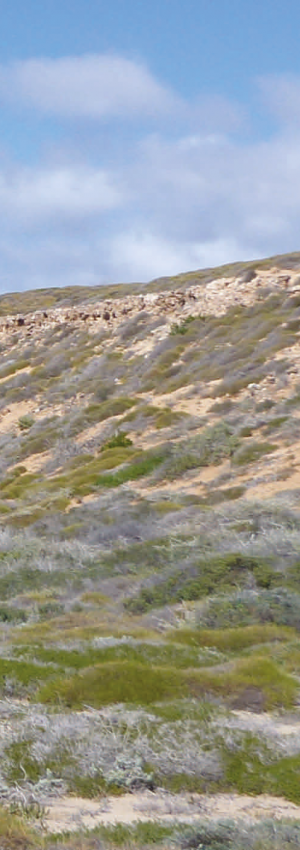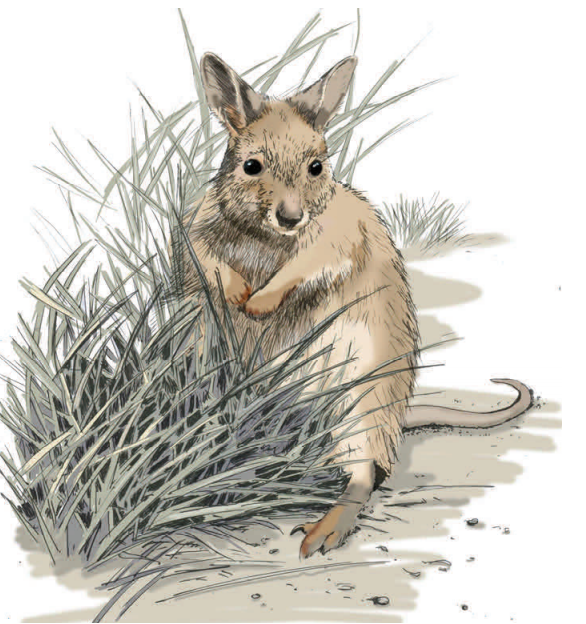Rufous Hare-Wallaby
Rufous hare-wallaby
Lagorchestes hirsutus
Description
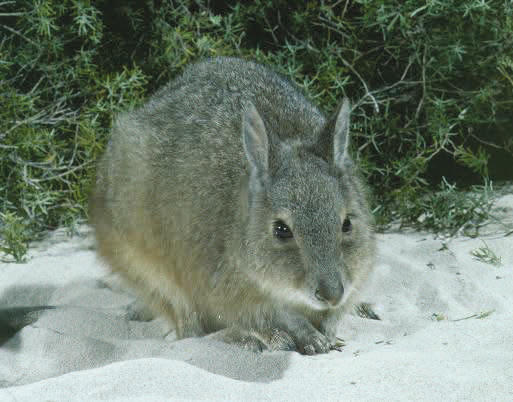
| Head-body 330-375mm |
Tail 270mm |
Weight 1.6-1.7kg |
The rufous hare-wallaby is best known as the mala in Western Australia. These hare-wallabies have long, soft greyish-brown fur tinged with red. Females are larger than males. They were once among the most abundant and widespread macropods in central Australia.
Diet and habitat
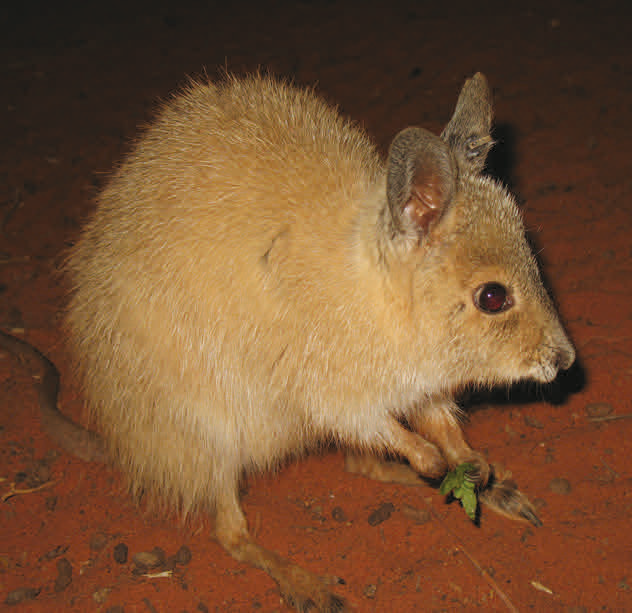
These relatively solitary animals live in low scrub and spinifex on sandy soils. During the day they shelter in squats, shallow trenches under shrubs or spinifex hummocks. When frightened, they burst out, often emitting a high-pitched nasal squeak, and zigzag at speed. They emerge at dusk to feed on grasses, seeds, bulbs and insects.
Breeding
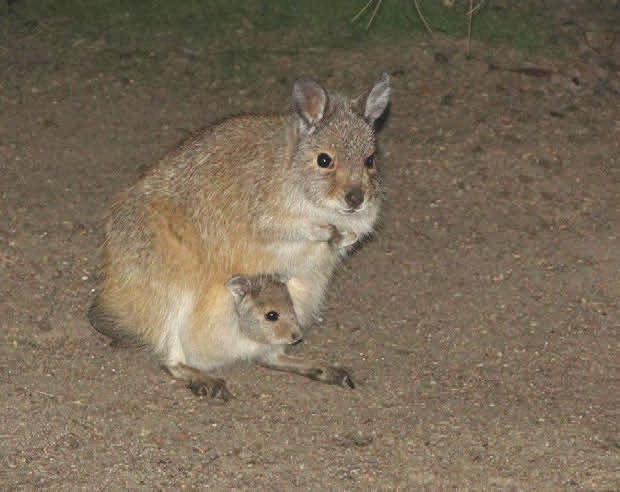
| Gestation 15 weeks |
No. young 1 |
Weaned 5 months |
Females can breed from 5 months and can produce up to three young a year. Like other macropods, mala can have more than one young at the same time. Females can delay development of a fertilised egg when there is a joey in the pouch; reactivating the embryo when the joey leaves the pouch. This is known as embryonic diapause.
Distribution
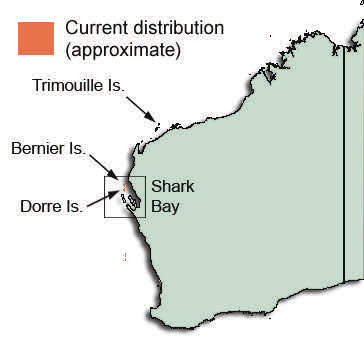
Mala were once widespread in central and western Australia but the last mainland populations were wiped out by 1991. Wild populations remain on Bernier and Dorre Islands and animals have been translocated to Trimouille Island (WA). They will also be introduced to Dirk Hartog Island as part of the Return to 1616 project.
Status

Threats to mala include loss of habitat, introduced predators and wildfires.
Fact sheet
SHARK BAY
World Heritage
